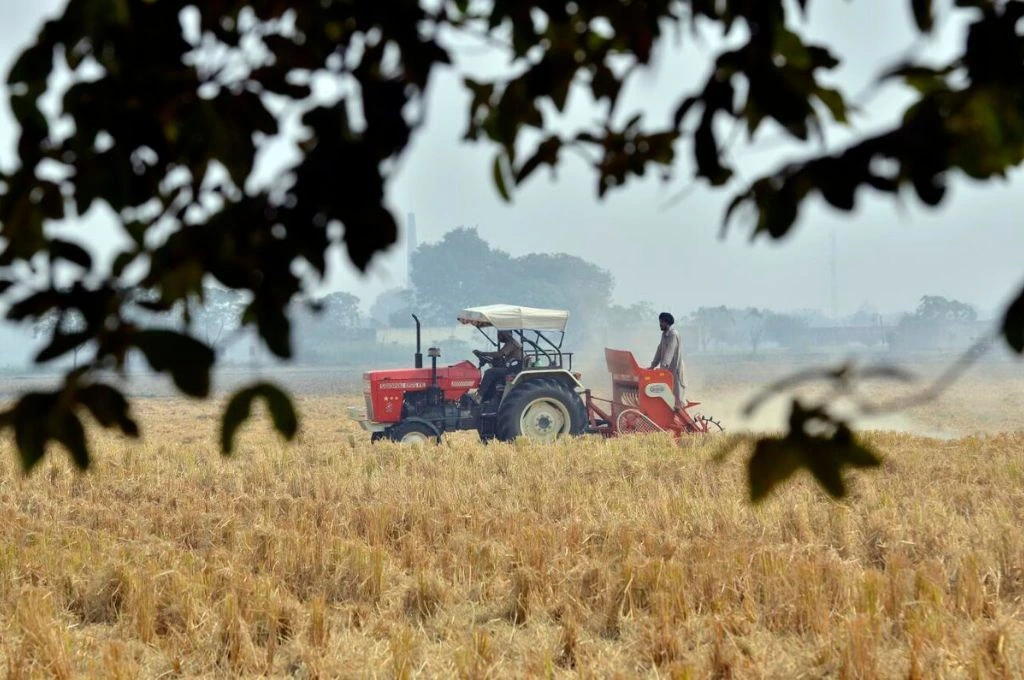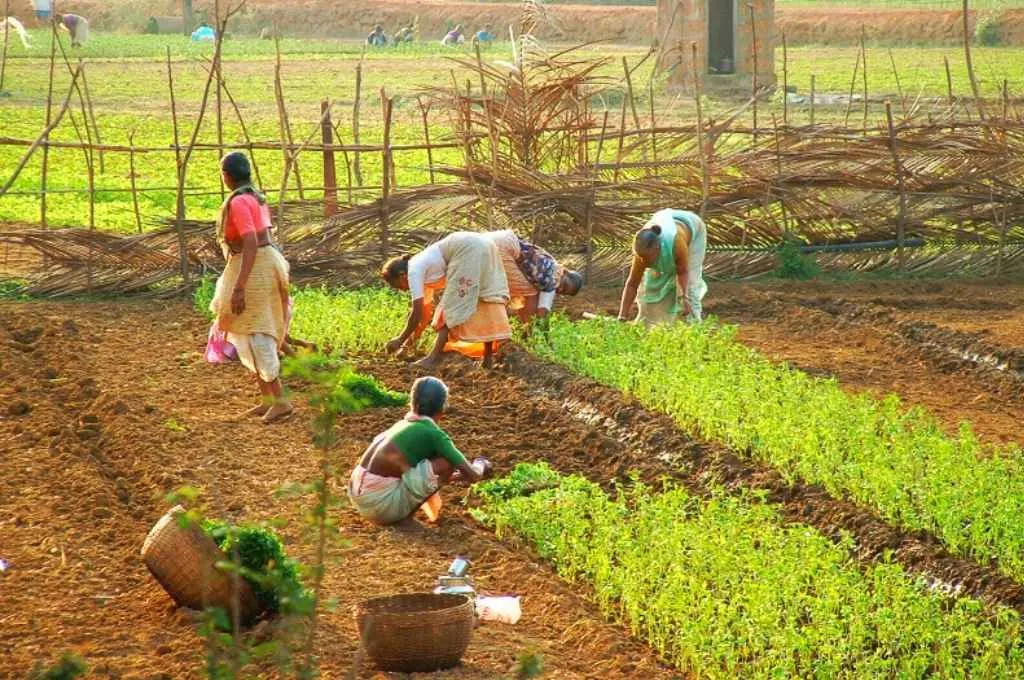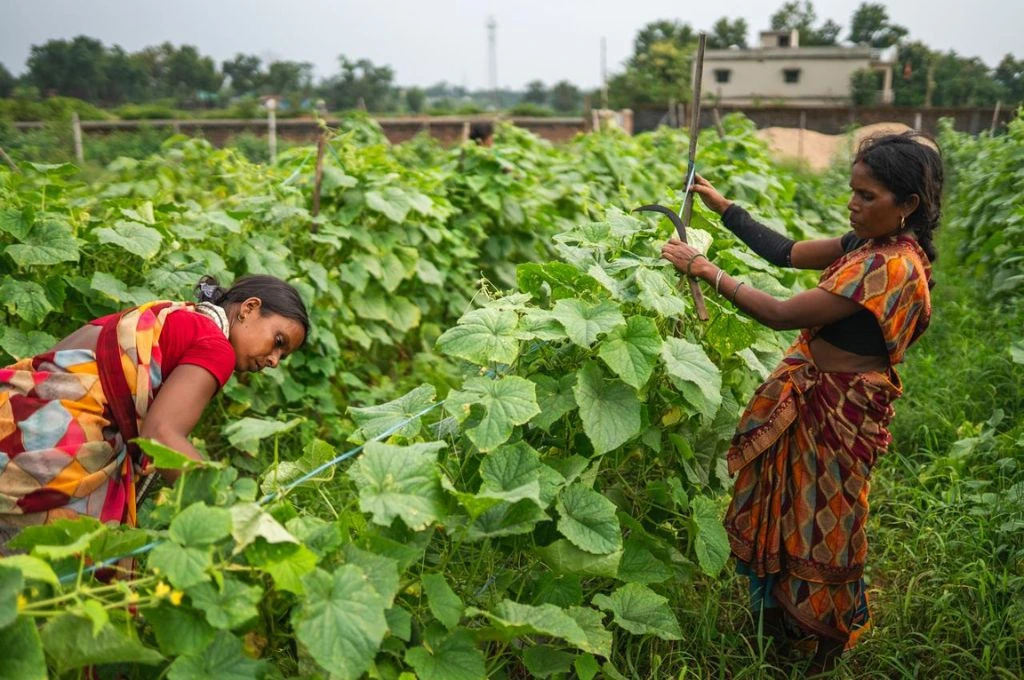Agriculture is the largest livelihood provider in India, with more than 50 percent of the population dependent on it. However, the rising frequency of heatwaves, erratic rainfall, prolonged droughts, and floods has pushed cultivation into increasingly uncertain territory.
These changes don’t just affect farmers; they reverberate across India’s food systems, influencing everything from the cost of food to nutrition. The impact is far from uniform. Small and marginal farmers (those owning less than 2 hectares of land), many of whom are women and located in rainfed regions, bear the brunt, often without access to the resources or infrastructure needed to adapt. Meanwhile, soil degradation and resource depletion threaten long-term food security and ecological stability.
Here are four frequently asked questions that help understand the climatic factors affecting crop production in India and the pathways available for building resilience.

1. How does climate change affect crop productivity?
Climate change disrupts every stage of agricultural production. Rising temperatures, erratic monsoons, extended dry spells, and unseasonal rains directly lower crop yields by inducing heat stress, disrupting flowering and pollination, and damaging grains at maturity. Crops such as wheat, rice, and maize—cornerstones of India’s food system—are especially vulnerable. According to projections, a 2.5 to 4.9°C increase in temperature across the country could decrease the wheat yield by 41–52 percent and rice yield by 32–40 percent.
These yield losses are compounded by soil degradation and water stress. Years of intensive monoculture and chemical fertiliser use, encouraged by the Green Revolution, have depleted micronutrients and organic matter in soil. In addition, studies have indicated that increased carbon dioxide levels are decreasing the concentrations of protein, iron, and zinc in crops such as rice, maize, and wheat.
Farmers cultivating climate-sensitive crops such as tomatoes are also witnessing rising losses due to perishability and high input costs. In Madhya Pradesh, farmers reported dumping their tomato crop by the roadside when prices weren’t profitable enough to justify transport and sorting, reflecting the vulnerability of perishable crops to weather and market shocks.
2. How does climate change affect food security in India?
The cascading impact of climate change has direct and indirect consequences for food security, particularly for marginalised communities. Lower crop yields lead to reduced supply and skyrocketing prices, pushing more people towards hunger and malnutrition. Undernutrition worsens as staples lose nutrients and food prices spike. The gendered nature of food insecurity is especially stark. As a report on the hunger gap points out, women are more likely to eat less or last during food shortages, a practice that becomes deadlier in the face of climate shocks.
Climate change also influences the food chain by damaging the ecology that sustains it. For instance, the Himalayas are warming faster than the global average, which affects agriculture by altering crop cycles and soil moisture. It has also led to an increase in pest attacks and diseases. These factors make food systems more fragile and vulnerable to future shocks.
3. Why are small-scale farmers in vulnerable regions most affected by climate change?
Smallholder farmers, who form more than 85 percent of India’s farming population, operate under some of the harshest constraints. Most rely on rainfed agriculture, have poor access to irrigation, lack adequate credit or insurance, and are excluded from formal market systems. In states such as Maharashtra, recurrent droughts force farmers into high-risk cash cropping, exposing them to debt and food insecurity.
In mountainous states, the picture is even more complex. In Uttarakhand, for example, Dalit and women farmers often have access only to marginal plots with poor irrigation and no support for diversification. While government schemes promote crops such as kiwi, the infrastructure costs are prohibitive. To set up a kiwi orchard, the cost of the infrastructure alone, before transportation and other inputs, could amount to approximately INR 40,000—more than what the average Uttarakhand resident earns in two months. Such an investment would exceed the means of small and marginal farmers, whose earnings are significantly lower than the average income.
Government agencies often promote organic farming as a climate adaptation solution. However, a lack of resources acts as a barrier to the adoption of organic farming by small to marginal farmers. The systemic exclusion of certain caste and gender groups, combined with limited financial buffers, makes adaptation almost impossible without targeted support.
Climate-driven migration is also emerging as a related trend. For instance, in coastal areas of Odisha and West Bengal, farmers are leaving agriculture due to increasing salinity and loss of arable land, contributing to growing populations of internal migrants who face new vulnerabilities.
4. What solutions can make agriculture more climate-resilient?
Multiple approaches are being implemented across regions to strengthen climate resilience in agriculture. These are context-specific and vary in scale and scope. There are four categories of interventions.
- Climate-smart agricultural practices: These locally suited practices often emerge out of need rather than environmental awareness, but end up building climate resilience. For instance, farmers in Andhra Pradesh’s Srikakulam district have adopted zero tillage—where the soil is not disturbed by ploughing or other tillage practices before planting—reducing labour and water use while increasing profit.
- Crop diversification and millet cultivation: Encouraging farmers to grow climate-resilient grains such as ragi and kutki can help address nutrition gaps and ecological degradation. Millets are water-efficient, high in micronutrients, and well-suited to rainfed regions, yet they continue to receive limited procurement and market support under existing policies, especially when compared to wheat and paddy.
- Organic and regenerative agriculture: Techniques such as natural composting, agroforestry, and crop rotation improve soil health, sequester carbon, and reduce input costs. However, experts caution that large-scale organic farming may lower productivity and raise costs unless supported incrementally. In Kerala and Madhya Pradesh, pilots have demonstrated the benefits of phased adoption over abrupt transitions.
- Community-driven adaptation: Nonprofits such as PRADAN and SSP have shown how organising women into self-help groups (SHGs) and linking them to local governance can be transformative. These collectives are reviving traditional knowledge, diversifying crops grown, and accessing entitlements to secure nutrition and income in drought-prone Marathwada and forested West Bengal.
As climate variability continues to affect agricultural systems across India, it is important to understand how these changes intersect with nutrition, livelihoods, and local ecologies. The responses explored above highlight both the challenges and emerging practices that are shaping the future of farming. For further reading, explore more insights on climate change and agriculture on IDR.
—
Know more
- Read how rising temperatures are affecting crop yields and threatening India’s food security.
- Learn how women and Dalit farmers in Uttarakhand are adapting to erratic rainfall, forest fires, and rising input costs.
- Understand how climate change is worsening gendered hunger and deepening nutritional gaps in vulnerable communities.





